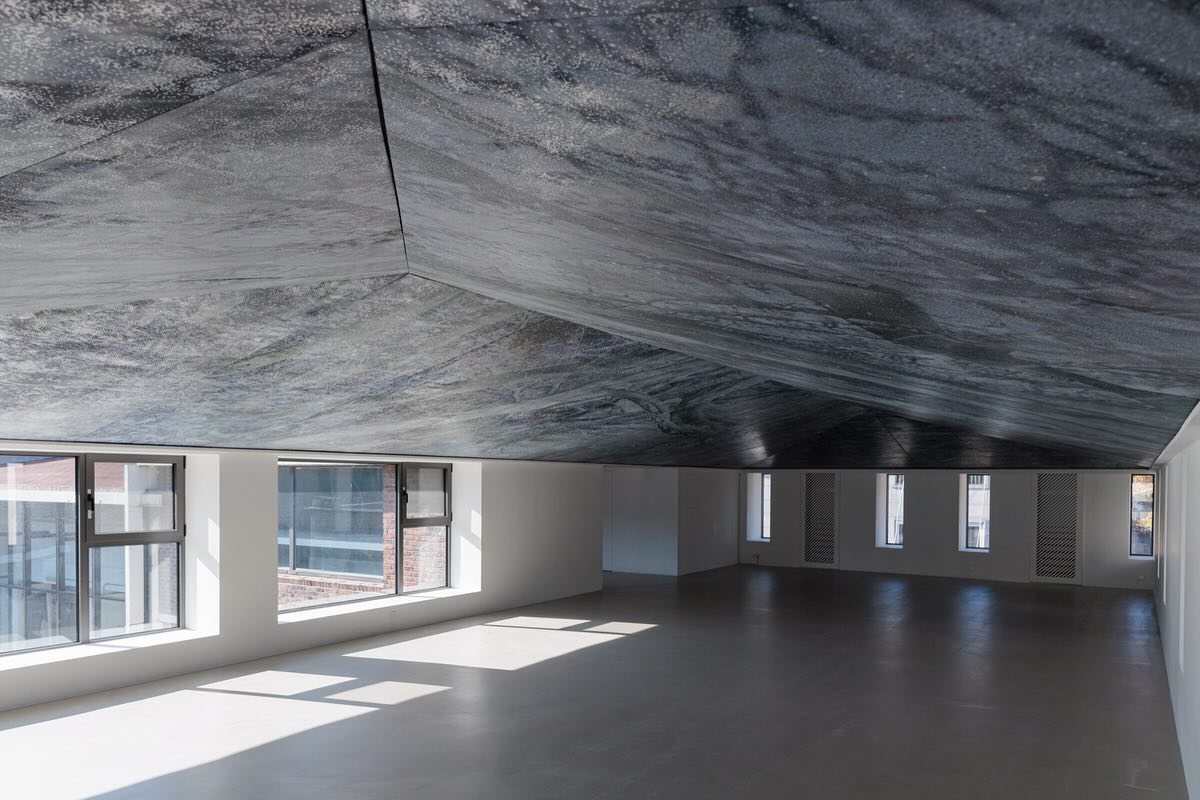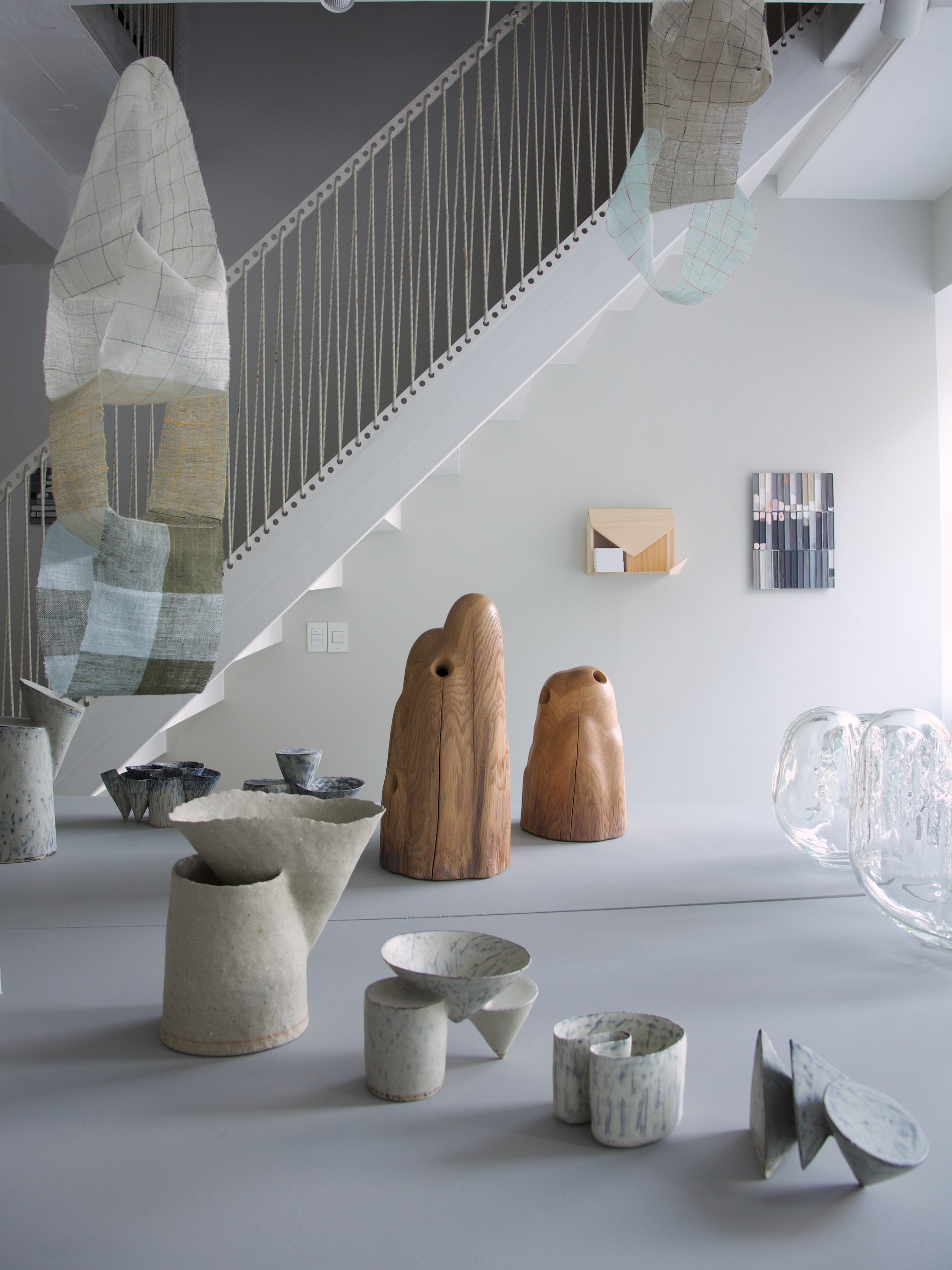 Artist Residency TEMI artist studio, Daejeon, Korea. ⓒArtist Residency TEMI.
Artist Residency TEMI artist studio, Daejeon, Korea. ⓒArtist Residency TEMI.Facilities that have lost their original functions and are no longer in use due to socioeconomic changes have been reborn as art centers. These derelict buildings and facilities transformed into local cultural centers have revitalized culturally marginalized areas such as rural regions and low-income neighborhoods.
A number of artist residency programs held at these art centers across the country outside of Seoul have been offering creative spaces for young artists to carry out their artistic activities and fostering art in various regions.
The Gyeonggi Creation Center (Ansan), Artist Residency TEMI (Daejeon), Horanggasy Creative Studio and Horanggasy Art Polygon (Gwangju), and Daegu Art Factory (Daegu) are some of the artist residencies in Korea that provide various opportunities to international and local artists.
 Overview of Gyeonggi Creation Center, Ansan, Gyeonggi. Courtesy of the GyeongGi Cultural Foundation.
Overview of Gyeonggi Creation Center, Ansan, Gyeonggi. Courtesy of the GyeongGi Cultural Foundation.Gyeonggi Creation Center (Ansan-si, Gyeonggi Province)
The Gyeonggi Creation Center, opened in 2009, is located in Daebudo, Ansan city in Gyeonggi Province. The center renovated seven buildings from a provincial vocational school established in 1995. Gyeonggi Creation Center is the largest art residency in South Korea, with a site area of 54,500 square meters and a building area of 16,200 square meters.
The center has various facilities, including artist studios, exhibition spaces, storage, workshop rooms, and numerous programs, including local community exchange programs, international exchange programs, and international summer festivals. The center aims to support the activities of the participating artists and the local community through mentoring programs, lectures, workshops, and many other different kinds of creative programs.
Through these various activities, as of March 2022, the center has supported more than 500 artists in various genres such as visual arts, performance, music, literature, and architecture.
In April, the Gyeonggi Creation Center succeeded in securing funding of 6 billion KRW from the government for the renovation of its old facilities. The institution is planning to reopen in 2024 with new facilities for both artists and local communities.
It will also have expanded and diversified support programs for more artists. The center will renovate four buildings. It will also tear down three studio buildings to create a park for art that looks over the Daebudo sea.
 Performance by Akiko Nakayama at the opening of Jaewook Koh: For Workers at Artist Residency TEMI, Daejeon, Korea. ⓒArtist Residency TEMI.
Performance by Akiko Nakayama at the opening of Jaewook Koh: For Workers at Artist Residency TEMI, Daejeon, Korea. ⓒArtist Residency TEMI.Artist Residency TEMI (Daejeon)
The Artist Residency TEMI in Daejeon is located on one side of Temi Park. Many programs are held both indoors and outdoors every season at the center, but the cherry blossom season is one of the best times to visit the residency as there are open studios and exhibition programs held at the center with other spring festivals next to the building.
Artist Residency TEMI was opened in March 2014 after renovating a gray-white concrete library building. The center was part of the Daejeon city’s project to revitalize the old downtown area through culture and art.
Mainly running artist residency programs, the institution accepts artists from around the world to support their artistic activities. The center aims to provide various exhibition programs and other indoor and outdoor programs to allow the participating artists to develop their practices and offer the local communities and visitors the chance to enjoy and appreciate contemporary art.
Artist Residency TEMI has worked with seventy-two Korean and international artists until this year. Representative Korean artists include Juree Kim, who creates sculptural works with clay; Dew Kim, who creates videos and sculptures based on the themes of K-pop, shamanism, and LGBTQ; An Ga Young, who works on interactive media art by combining games with art; and Cho Youngju, an artist who presents the role of women demanded by society through performance, installation, photography, video, and sound works.
 Exterior view of Horanggasy Artpolygon, Gwangju, Korea. ©ArtZoo.
Exterior view of Horanggasy Artpolygon, Gwangju, Korea. ©ArtZoo.Horanggasy Creative Studio & Horanggasy Art Polygon (Gwangju)
Horanggasy Creative Studio and Horanggasy Art Polygon are located in Yangnim-dong History & Culture Village in Gwangju City. In 1904, Western missionaries settled in this area spreading modern Western culture, including art and music, through hospitals and schools in the country.
Horanggasy Creative Studio was opened in the Spring of 2013 after renovating a missionary house established in 1950. The studio is named after a holly tree, Gwangju City’s natural monument that is over 6m tall and over 400 years old. The studio annually runs residency programs for Korean and international artists to support the activities of young artists and contribute to the local community.
Horanggasy Art Polygon, located right next to the creative studio, was originally a 33-square-meter garage. The space is a complex cultural space that allows all kinds of arts to flourish in a multifaceted way, including holding exhibitions for the participating artists, other curated exhibitions, lectures, performances, and workshops.
Horanggasy Creative Studio and Horanggasy Art Polygon began the residency program in 2014. Artists from various fields such as visual arts, performing arts, film, literature, and fashion have participated in its program. In 2015, the center was awarded the Grand Prize by ARKO Arts Council Korea for supporting local art. Horanggasy Art Polygon was one of the venues for the Gwanju Biennale in 2021, which featured works by Korakrit Arunanondchai, Sissel Tolaas, Patricia Dominguez, Sahej Rahal, and Sangdon Kim. The venue will also be part of the upcoming Gwangju Biennale in 2023.

Performance by Akiko Nakayama at the opening of Jaewook Koh: For Workers at Artist Residency TEMI, Daejeon, Korea. ⓒArtist Residency TEMI.
Daegu Art Factory (Daegu)
Suchang-dong is an old downtown area in Daegu city, where old houses built between the 1920s and 1970s are gathered. In October 2008, the KT&G’s Tobacco warehouse in this neighborhood was selected as part of the modern industrial heritage preservation project and got transformed into Daegu Art Factory in 2013.
The four-story building is equipped with exhibition spaces, an art book platform, an art information room, and a performance hall that can bring together artists of different genres such as visual art, performance art, indie music, and theater. The Daegu Art Factory aims to build a foundation for nurturing artists of various backgrounds through residency programs and other activities.
Daegu Art Factory opened eight new programs this year in an effort to revitalize its unused spaces and enhance communication between the artists and visitors. From April to July, eight cultural foundations all over the country, including the Pohang Cultural Foundation, the Gimhae Cultural Foundation, and the Jeonju Cultural Foundation, visited the institution to have a benchmarking meeting on the factory’s programs and a facility tour. Through such programs, the number of visitors to the art factory recently increased by 44%, from 6,957 in 2021 to 22,795, establishing itself as an open cultural space in the Gyeongnam region













